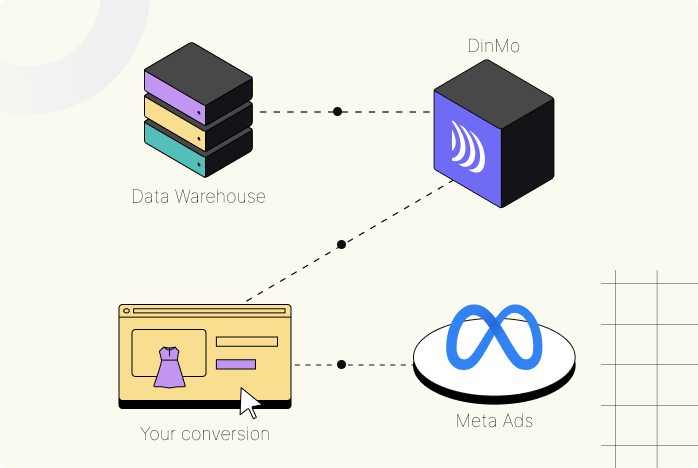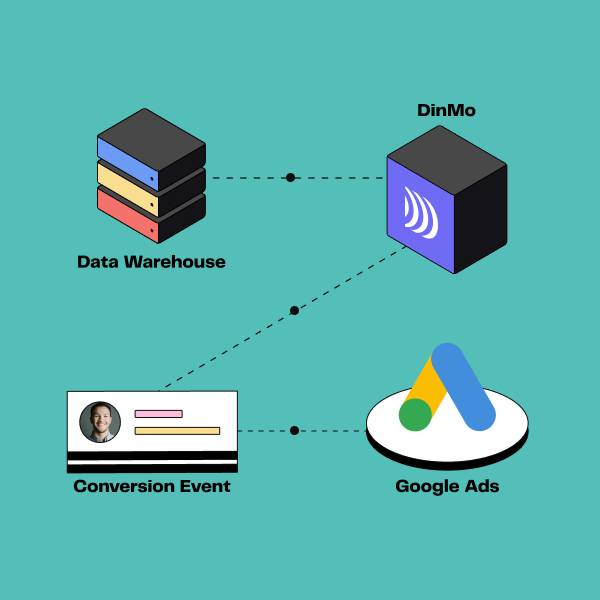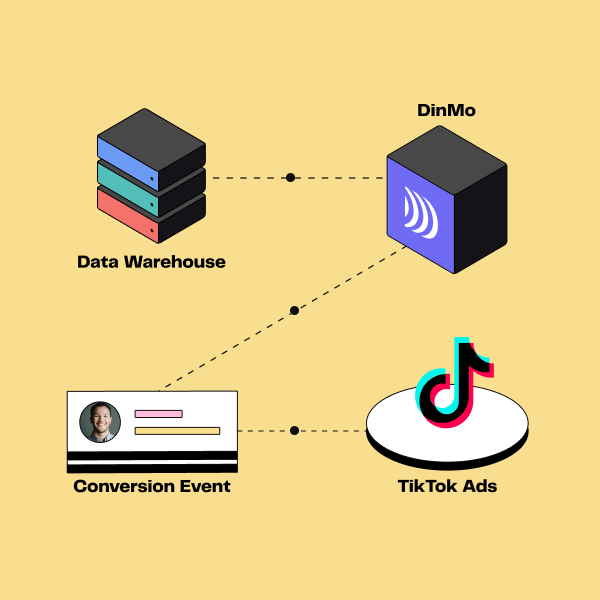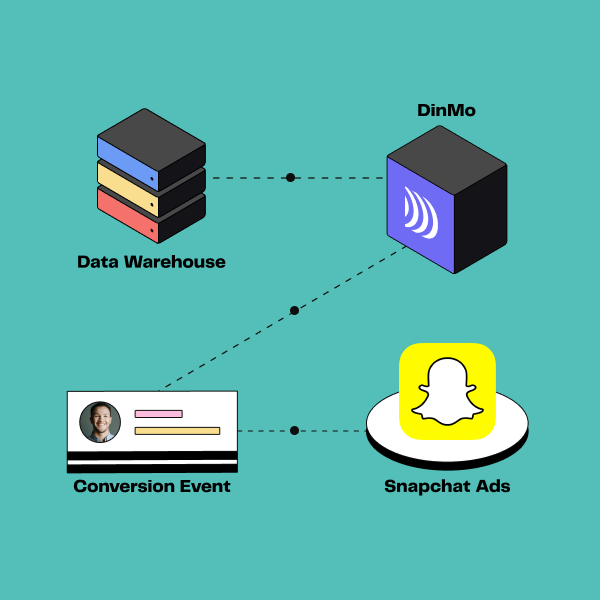
Snapchat Conversions API made easy
5min • Last updated on Sep 24, 2024

Alexandra Augusti
Chief of Staff
The gradual disappearance of third-party cookies has had a significant impact on advertisers' acquisition costs on major platforms like Meta Ads, Google Ads and Snapchat Ads. This impact is estimated at 20% today and could reach up to 50% by the beginning of 2025.
To cope with this technological shift, almost all advertising platforms have developed Conversions APIs since 2021. These APIs allow marketers to share conversion events from their leads and their customers with advertising platforms.
However, for all the conversion APIs, there are several ways of implementing them, and not all of them necessarily give the same result.
👉🏼 This guide is thought for those seeking to master the Snapchat Ads Conversion API, offering a strategic advantage in advertising strategies.
Sending conversions: why it's important?
Ad platform algorithms are designed to enhance the performance of your advertising campaigns based on your set objectives, which can range from boosting brand awareness to achieving direct conversions. These algorithms rely on a variety of signals to meet these goals, with conversion events being some of the most crucial data as they most accurately qualify your audience.
Without accurate event tracking, algorithms lack the necessary information to effectively target users, which can result in unnecessary marketing spending. For instance, ads might continue to be shown to a customer even after they have made a purchase. The platform might not recognize the user has converted and may still consider them a high-potential buyer due to their previous interactions with the ad.
💡On average, 10% of CAC is spent on customers who have already make a purchased, because advertising platforms lack information about your customers.
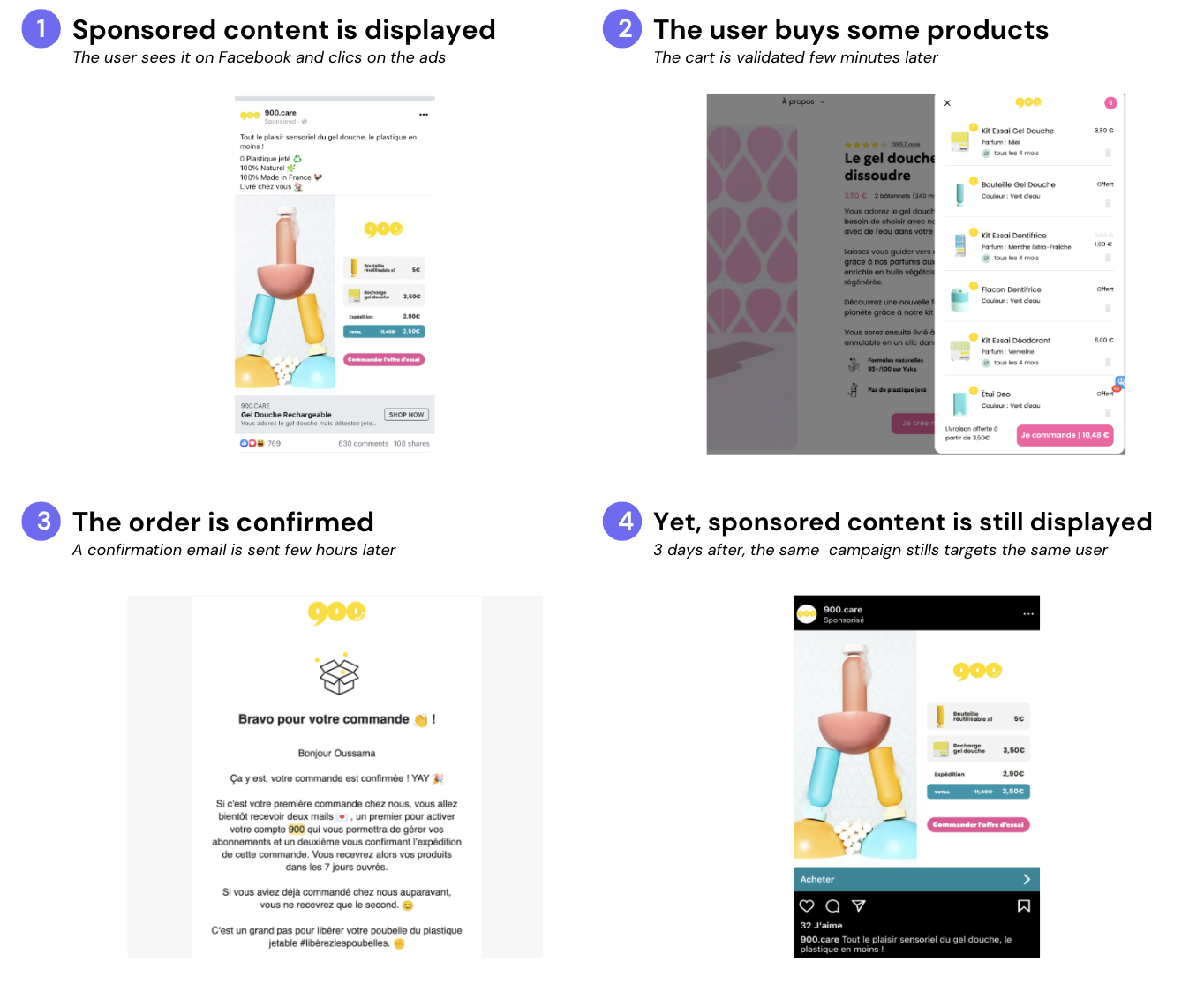
Impact of the end of 3rd party cookies: Ads continue to be shown to people who have already converted
In essence, Conversions APIs provide numerous advantages, including more precise event tracking, improved attribution, and greater compliance with privacy regulations. Indeed, when implemented, Conversions APIs give you control over what and when data should be shared.
Given the coming phase-out of third-party cookies, they have become indispensable for capturing the entire customer lifecycle, whether they are new or returning customers.
Tracking events via the Conversions API
Historically, conversion event tracking was based on "Snap Pixel Tracking", an SDK that you must directly install on your website or via your Tag Management Systems (for instance, Google Tag Manager).
Yet, traditional pixel-based tracking is problematic today for several reasons:
Disappearance of third-party cookies for most popular browsers (already effective on Mozilla and Safari, upcoming for Google Chrome)
Privacy regulations, limiting users tracking and the use of their personal information (GDPR and CCPA)
Ad blockers, which can prevent pixel scripts from being triggered
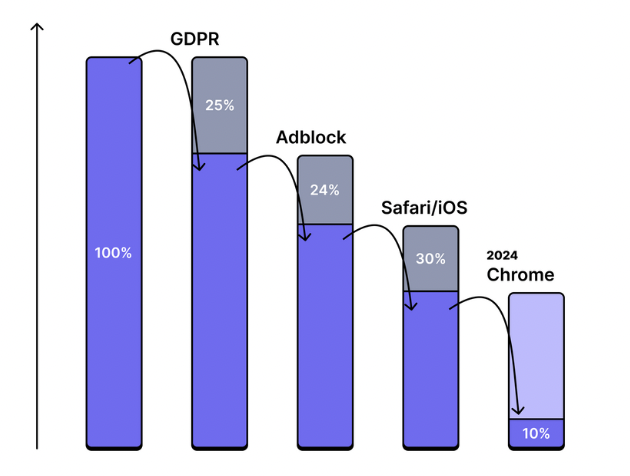
Less and less information are available for marketing purposes
Moreover, traditional pixel-based tracking is also critical for:
Performance problems, as pixel may slow down a site's loading time
Limitation in the type of data which is sent (only online events)
To tackle these challenges, Snapchat has been offering the possibility of using a direct upload of conversion events from advertisers' servers for more than 3 years now.
Unlike traditional pixel-based tracking, Snapchat Ads' Conversions API allows direct tracking from your server.
This means that whenever a user interacts with your website or application, the data is sent directly from your server to Snapchat Ads, bypassing the user's browser. Choosing to track via the Conversions API allows for more precise and reliable tracking on your website, effectively addressing technological and regulatory challenges.
But that’s not all! Snapchat Conversions API also allows you to track and share a much wider range of events, including those occurring offline, such as in-store purchases. With more precise and comprehensive data, you can create more segmented audiences for targeted advertising campaigns.
In short, the Snapchat Conversions API is designed to provide more reliable tracking in environments where cookies are restricted, the ability to share information offline, while providing a more privacy-friendly means of tracking conversions.
However, Snapchat still recommends the implementation of both client-side (via Snap Pixel) and server-side tracking to maximize performance. This dual approach ensures to minimize signal loss, ultimately leading to more efficient results.
How to perfectly implement Snapchat Ads CAPI?
To fully benefit from Snapchat Conversions API, it's crucial to prepare thoroughly in advance. Proper groundwork ensures a flawless implementation, setting you up for the future of online advertising.
🌟 This guide is designed to comply with the new version of the conversion API, released on 18 March 2024.
Here are the five essential steps to implement Snapchat Ads Conversions API:
Choosing Events to Send to Snapchat
A customer's buying journey can be broken down into several stages, from discovering your product or service to making a purchase. As you progress through the funnel, the buying intent increases.
You must implement CAPI for events that are most important to you and on which you want to optimize your campaigns.
Let's take the example of a B2C company offering promotional codes to be used in-store if the customer signs up for the newsletter. Only 50% of obtained leads are genuinely qualified (= will buy something). The company wants to transition from lead management to qualified lead management. To achieve this, it must send events transforming a lead into a qualified lead via the Conversions API. The algorithm will then optimize campaigns to better distribute the newsletter subscription form.
Collecting Your Events Server-Side
Once your funnel is defined, it's essential to ensure that you can collect these events from your server. For offline events, it's necessary to collect and centralize them in a single source of truth regularly. To do so, we highly recommend using a data warehouse (and not a CRM).
Attention, for all types of events, it's important to ensure to collect first-party data, such as email or phone number, to enrich your events and allow Snapchat to recognize profiles on its platform.
Here is the list of accepted parameters to match events to Snapchatters:
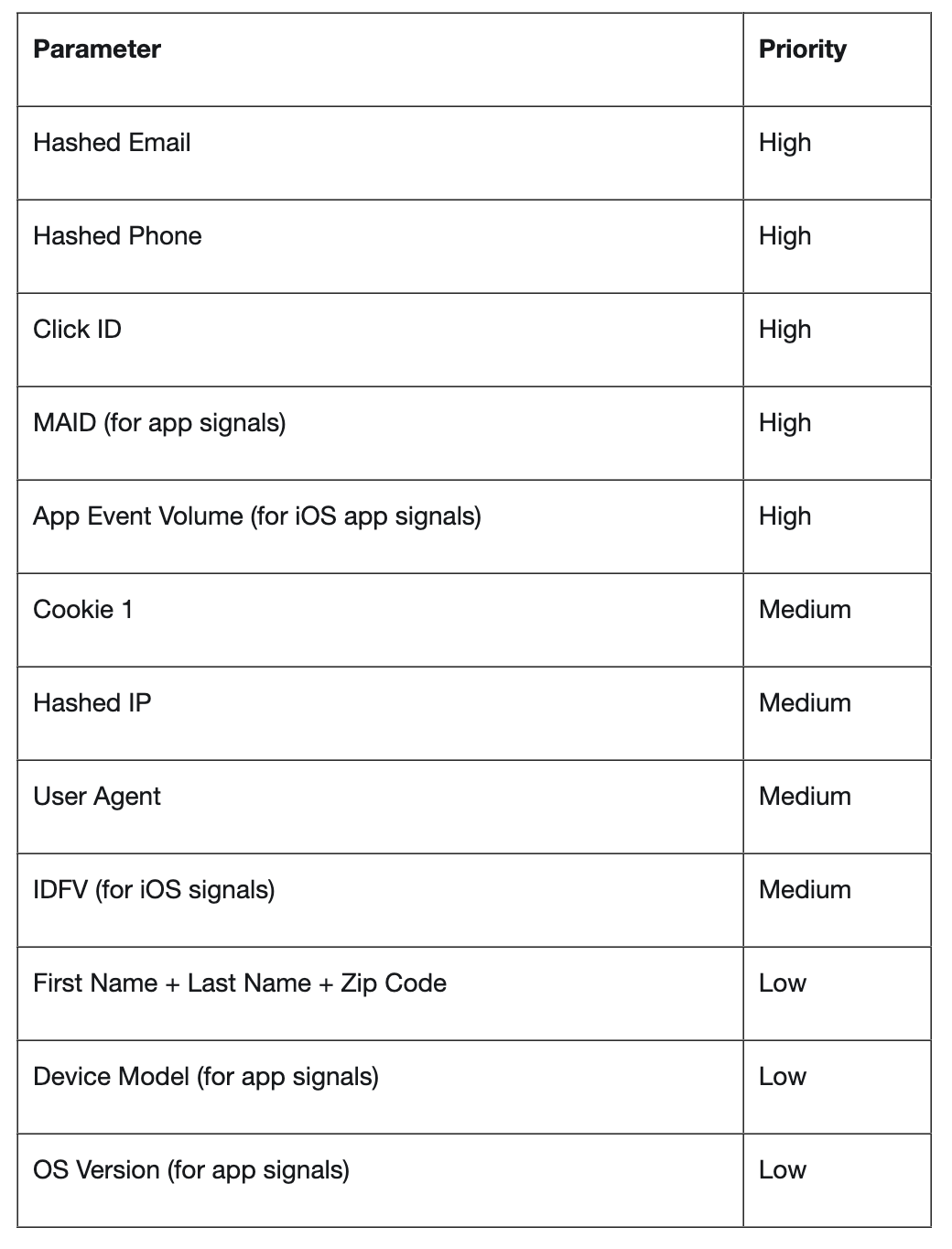
First-party parameters accepted by Snap (Source : Snapchat)
Choosing the Appropriate Integration Solution
There are several ways in which you can set up the Conversions API: using your Tag Management System, via Direct Integration, via other third-party partners (including Reverse ETL).
Here is an overview of all the solutions:
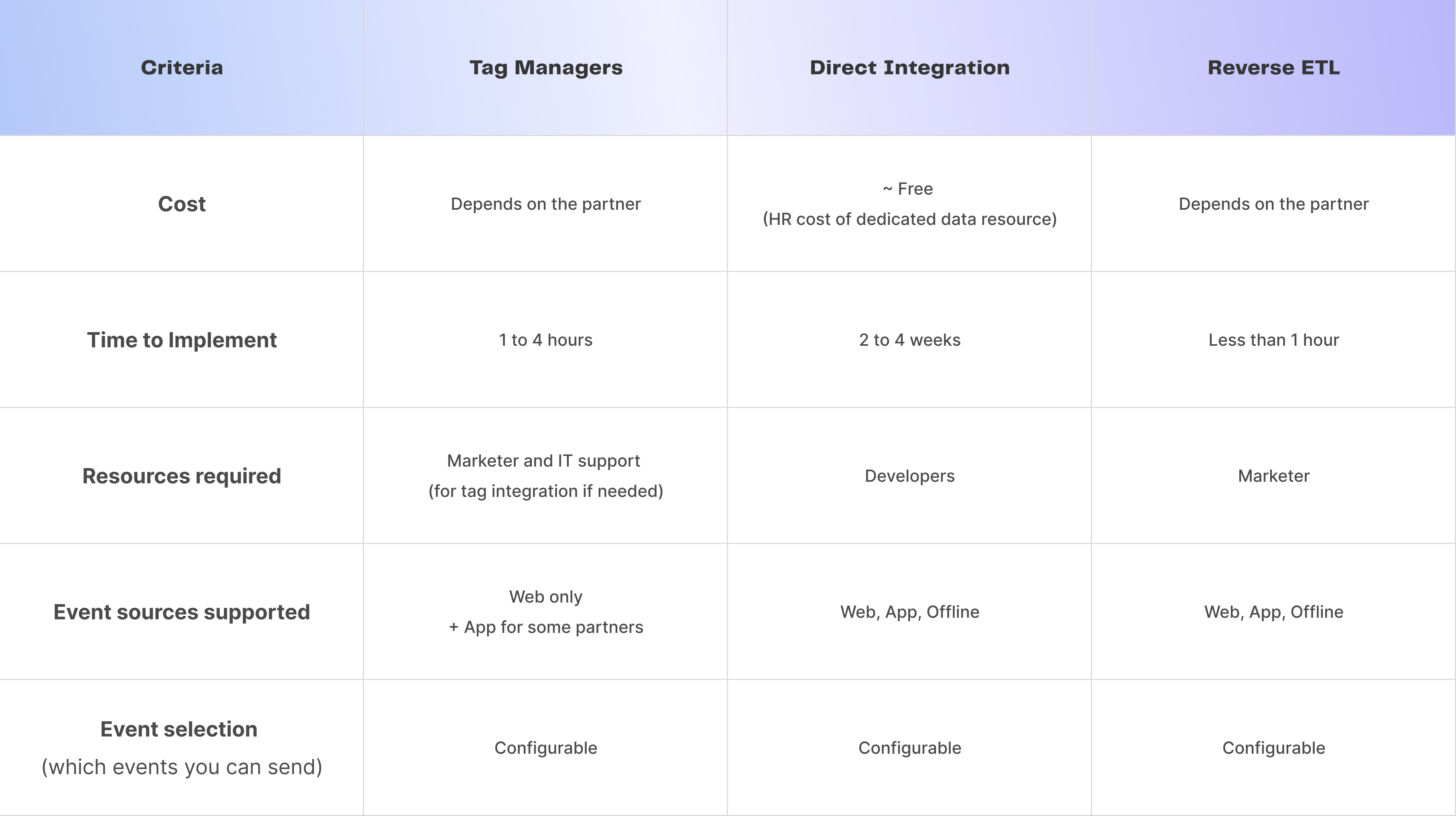
Snap CAPI implementation methods
Implementing Snapchat Conversions APIs with your Tag Management System is super easy, but you won’t be able to track offline events.
Yet, in many cases, your customer relationships are distributed among multiple touch points. These events live in different sources and can be used to fuel your business:
Lead events in the CRM
Product usage events in your product backends
Engagement events in your analytics tool
In-store purchase events in your offline databases
All this data is necessary to reconstruct your customers' journey. To address this challenge, we recommend centralizing all your conversion data, regardless of its origin, in single source of truth (most of the time, a data warehouse).
Sending data from your data warehouse to Snapchat can easily be done leveraging Reverse ETL solutions. DinMo allows to connect your data warehouse to your Snapchat account in just a few minutes.
💡You might be wondering: what if my company builds a direct integration between my source and Snapchat? At first sight, it seems possible. Yet, Snapchat is continuously evolving its Conversions API. This means investing in technical support to set up (2 to 4 weeks) and maintain the API.
Ensuring Implementation Quality
Monitoring Pixel vs. Server Event Count, Event Match Quality (EMQ), and Event Deduplication are essential for assessing the effectiveness of your CAPI implementation.
Pixel vs. Server Event Count: By implementing the Snapchat Ads Conversions API in addition to Snap Pixel tracking, you can see the number of events received from each source. Make sure you have at least the same number of events from the server as you receive from the pixel.
Event Match Quality (EMQ): This score indicates how effective the customer parameters and identity signals passed with CAPI may be at matching to a Snapchat account. Better event quality score means events more conversions and lower cost per result. If your EMQ is “Poor” or “Okay”, check the Snapchat Best Practices to improve it.
Event Deduplication: If you share your web events via the Snap Pixel and the Conversions API, Snapchat can receive the same events from both the browser and the server sides. If Snapchat determines that the events are identical, the platform will keep one and ignore the other. This is called deduplication.
Why and How to Act Now?
The end of third-party cookies is imminent, making it crucial for online companies to address this impact. Advertisers who swiftly adopt new cookieless technologies and best practices will gain a lasting competitive edge.
Using Snapchat Conversions API isn't just about adapting to technological changes; it's an opportunity to enhance your advertising strategies for better performance and privacy compliance.
If you haven't yet considered how Snapchat Conversions API (or any other platform's Conversions API) can benefit your business, now is the time. To learn more about our approach, feel free to contact us.


















